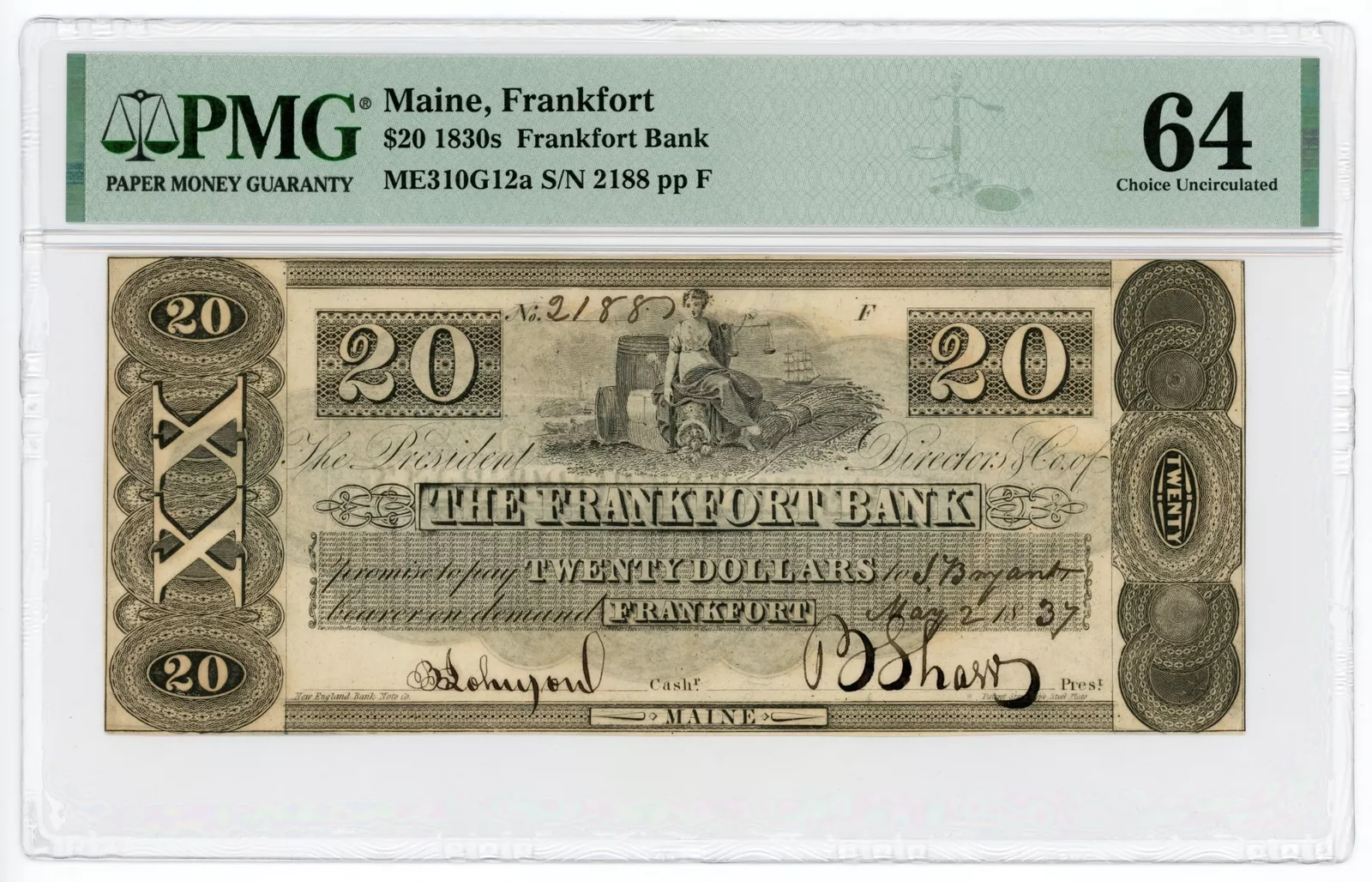Finding Hidden Treasure: What are Obsolete Bank Notes?
- Larry Ayer

- Aug 15, 2024
- 3 min read
Updated: Nov 3, 2024
Obsolete Bank Notes are private bank-backed paper currency issued before the Civil War by state chartered banks. In July of 1861, the federal government started printing money to finance the war and these notes were called demand notes or greenbacks. In 1862, the previous banking act was abolished and a new act put in place with the notes--now called legal tender notes. In 1863 and 1864, the federal government, under national bank acts, again allowed banks to issue notes but the notes had to be on federally-approved paper and with all the same design. Previous to this, there were about 7,000 varieties of notes each with a different design. Many of these notes are very scarce. Try and locate a Maine Obsolete Note and find out how difficult the task is.
The Process of Printing Bank Notes
Valid bank notes were printed from plates made by skilled engravers and produced by valid bank-note companies. Back then there were counterfeits as well. A counterfeit could be printed from a false plate or the numbers raised or altered to make the note of a higher value. Notes from a bank that never opened its doors could be stolen and used for nefarious purposes. Counterfeits from the same time period that the bank existed can be of collectable value as well.
Sheets of notes were sent to the corresponding bank from the printer. The bank president wasn't at the bank every day so when he came around he would put his signature on enough notes until he came around again. The cashier, who ran the bank, would cut off individual notes and sign, date, and number each note as it was issued. Circulated and signed notes are worth more than leftover uncirculated notes (called remainder notes). Proof Notes are specimens printed on special paper shown to the bank president for his approval before production. These can be worth a lot of money.
Features on a Legitimate Note
The name of the bank should be on the note, usually toward the center of the note. The title of the bank often reflected a location, an industry, a geographical feature, or a name from history. Within a state there was only one bank of a certain name. All notes had their town and state listed on them. The denomination had to be on the currency as well. The more times the value was printed, the harder it was to counterfeit. Most notes had five or more times the denomination was printed on the note. Notes had a large main vignette printed on it mostly on the top center. These scenes were often scenic but could also be other things. Most notes also had two or more smaller vignettes which were usually portraits of people. Some notes had ornamental borders and geometric figures. The bank note printing company was almost always on the face in small letters near the bottom. These features were the main validating items on a note but there might or might not be some other features as well.
The Allure of Collecting Obsolete Bank Notes
These obsolete notes are fascinating, especially from rural America. They give insights as to what was happening in blue collar America at the time. We just sold a $10 note from Manchester, Iowa. It was from the Manchester Academy Bank. These were the first ones ever auctioned and none had been graded up to that point. No one has been able to find a lot of information on this academy but maybe the person from Iowa who bought it had information. While at the Bay state Coin Show we sold three different denomination notes from Sanford, Maine from the Sanford Bank. The customer was going to frame them and give as a gift to his father to hang on the wall at his Sanford lake cabin. Other states and territories notes' can be worth a premium. Western states are in demand. Currency from Utah, Kansas Territory, or Arkansas are worth more than ones from New Jersey, Pennsylvania, or New York. Florida Notes are popular. Unusual denominations such as $4, $6, $7, $8, or $9 are worth more than the standard denominations. There are many avenues to travel here. Buy what you like. These notes are scarce and rare and not as expensive as you would think.
In Conclusion
Searching for obsolete bank notes is half the fun. They can be found at auctions such as Heritage, Great Collections, or small local auctions. Coin shows might have some. Dealers might have what you are looking for. Woodland Treasure has some, not a large selection yet, but it is slowly growing. We also have some on our shelf at the Old Creamery Antiques Mall in Ellsworth, Maine. Click any of the pictures in this post and it will lead you to that note on our website, or you can visit the product page.
Thanks for taking the time to read this.
Larry











Comments